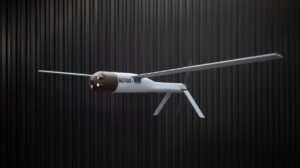Anduril Technologies said on Thursday it has developed new versions of its Altius 600 and 700 small drones that operate as loitering munitions capabilities.
The new Altius 600M and 700M systems are designed to accommodate multiple types of seekers and warhead options, according to Andruil, which noted the larger 700M system can carry warheads as heavy as 35 pounds.

“Both models are designed with a modular open systems approach, a hallmark of most Anduril platforms, making them exceptionally flexible and adaptable,” the company wrote in a statement.
Anduril said the Altius 600M and 700M loitering munitions are capable of being launched from fixed-wing and rotor-wing aircraft in low or high altitudes as well from ground vehicles and watercraft.
The base versions of the Altius 600 and 700 are designed for mission ranging from ISR data collection, kinetic engagement, radio frequency decoy use, signals intelligence and communications relay, Anduril noted.
“Like all Anduril systems, the Altius platform is autonomous and one operator is able to control multiple assets,” the company wrote in a statement. “Altius has demonstrated autonomous coordinated strike, target recognition and collaborative teaming.”
Anduril last April acquired Area-I, which originally developed the Altius family of drone systems (Defense Daily, April 1, 2021).
The Army has been using the Altius 600 as a prototype for its Air Launched Effects (ALE)-Small, to include operated on multiple waveforms for the first time at this May’s EDGE 22 experiment at Dugway Proving Ground in Utah, which officials double the range for the drone’s data transport capacity (Defense Daily, May 16).
ALE is the Army’s push to develop new autonomous air vehicles with a variety of payloads and mission system applications that can be launched from the service’s Future Vertical Lift fleet to provide a range of effects for reconnaissance, extended communications links and eventually lethal capabilities as well.
Army officials have previously said the near-term focus is on ALE-Small, while the service continues to leverage work out of the Pentagon’s Strategic Capabilities to inform ALE-Large.
Earlier this year, the Army released three Request for Information notices to industry focused on the ALE-Small and Large architectures, mission systems and all-up round, noting plans to potentially begin fielding the new systems by fiscal year 2028 (Defense Daily, April 5).